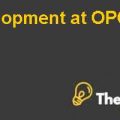
INTRODUCTION
Management is a broad expression that includes a wide array of organizational related participants and factors. This case study analysis reflects what and how different participants and factors can react and respond to the change management process in an organization. This study discusses on the subject of post takeover adolescent management approach and the consequences it has. Organizational effectiveness is critical to success in any economy. To achieve increased and sustainable business results, organizations need to execute strategy and create an environment for high employee engagement (Leadership insights 2012).
The case discussion involves that management of an organization involves all the stakeholders’ entrepreneurial functions as well as the managerial tasks carried out. It also involves stakeholder’s competence and entrepreneurial roles evaluation and performs the change process accordingly.
ANALYSIS
The challenge for businesses is to create an environment where employees understand and commit to the company’s direction, strategy and goals (Leadership insights 2012).
This case study involves numerous management issues and problems that an entrepreneur can face after a post takeover of an organization. The issues can be stretched to different levels of the organizational stakeholders which are as follows:
- Controlling employees of all three tiers
- Lack of knowledge
- Attitude and personality issues
- Decision making processes
In this case the issues related to the organization have been differentiated into two broad categories that are thoroughly analyzed.
- Employee’s conceptual category
- Entrepreneur’s conceptual category
EMPLOYEE’S CONCEPTUAL STRATEGY
The data set of this category comprises of 1 core category and 6 different sub categories that gives a comprehensive picture of what an entrepreneur should look for in the management of employees. First category is the decision making and the consequences. Decision making comprises of three categories that are growth decisions, process decisions and the reaction decisions. The entrepreneur encountered these differences when the site was moved to new location and he bought an existing engineering facility going against the advice of his four senior managers that were very reputed in that organization.
Post decision making problems were followed by consequences which were divided into main 3 categories that were drains, U-turns and internalities. They mainly consisted of the reversed decisions after a failing concept, financial loss due to ex-decisions and the negative attitude and feelings of employees toward the new employer.
The other remainder of the categories included employer’s personality, managerial and technical naivety, employee’s attitude, understanding what is required for the business to prosper, historical point of view and colleague perception.
ENTREPRENEUR CONCEPTUAL CATEGORY
The data set in this category comprises 1 core category and 7 subcategories that are self as manager and WE as involving the attitude of the employer, inability to work on the technical details, games, naivety in decision making, perceptual differences between employees and employers and decision consequences. These problems aroused due to the; I, ME, and My attitude of the employer which is the root cause of several of the subcategories. Negative attitude towards the employees and perceptual differences made it worse. The employer was also lacking technical details; therefore he was not been able to take calculated decisions with respect to business.
Further investigating the categorical problems will give us a clear picture of how to cope up with the issues to help the business to prosper. Following are the list of problems that the organization faced:
- The employer moved the business to new place in the heart of town that increased the rental costs while already owning the existing facility.
- The entrepreneur bought an existing engineering facility to further maximize the efficiency of the business; however the senior engineers in his organization refused to this decision.
- There was a lack of communication in the organization as only one meeting took place between the employer and the employees.
- The employer wanted to implement the diversification strategy in the organization.
- The employer hired more employees in the beginning and later he ended up firing them.
Negative feelings and attitude arouse due to lack of communication.......................
This is just a sample partial case solution. Please place the order on the website to order your own originally done case solution.













